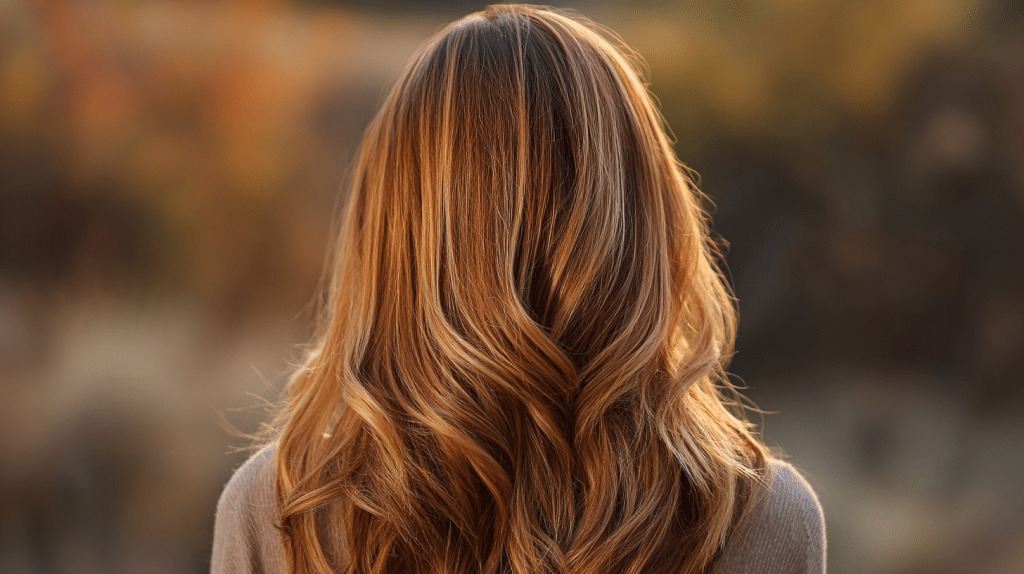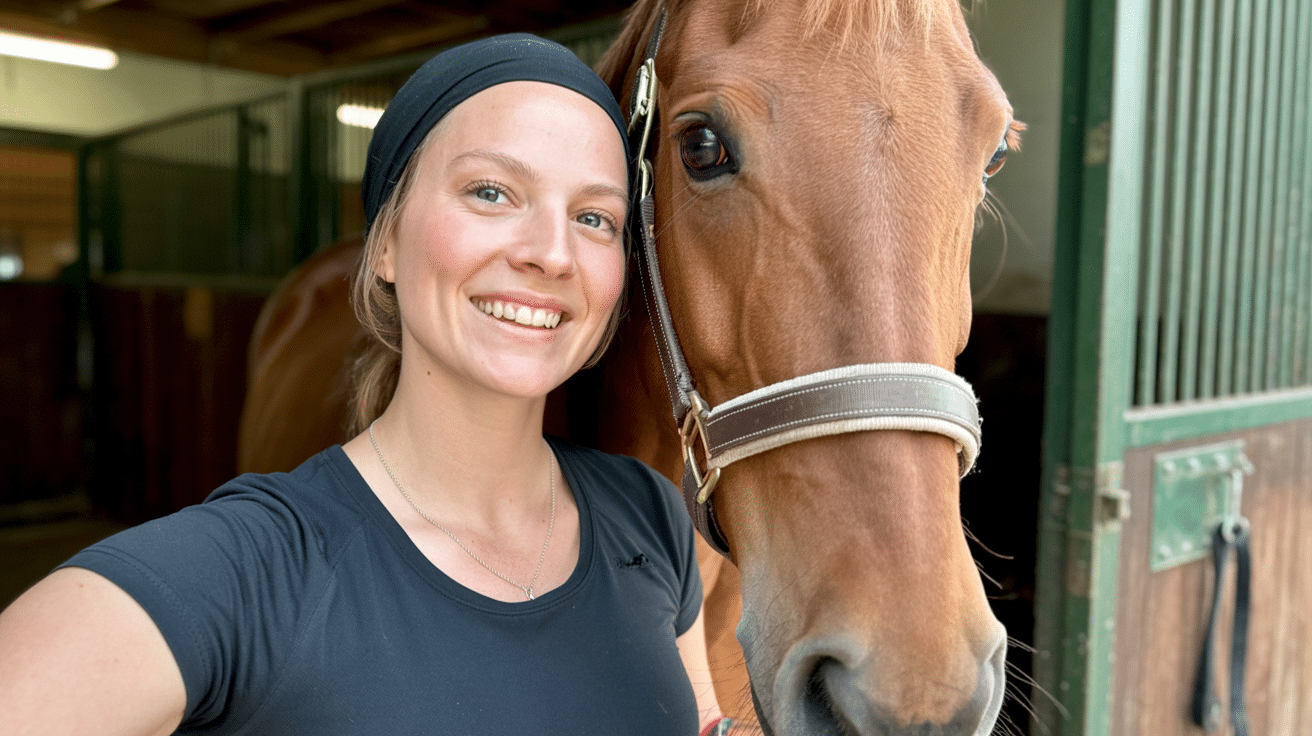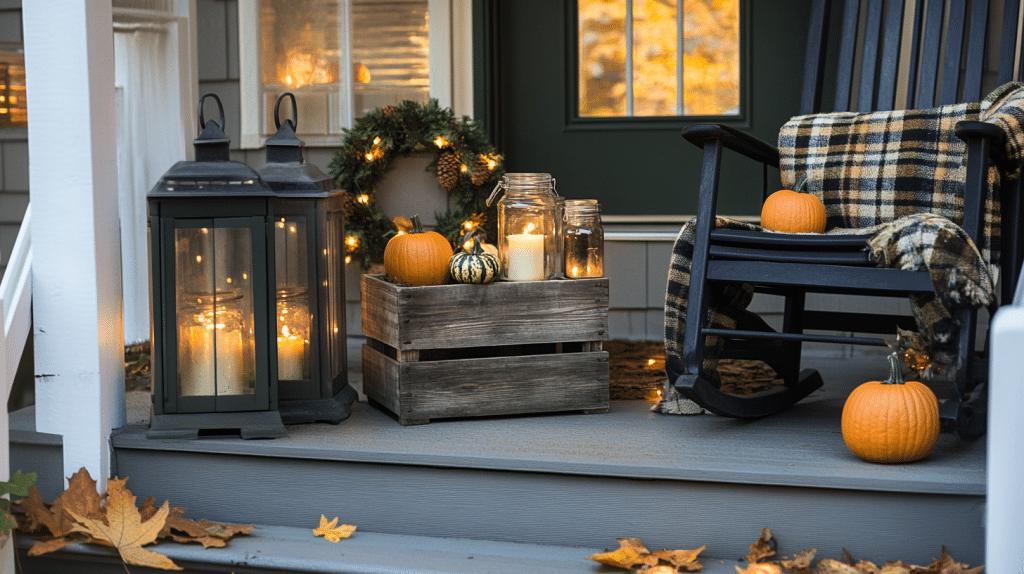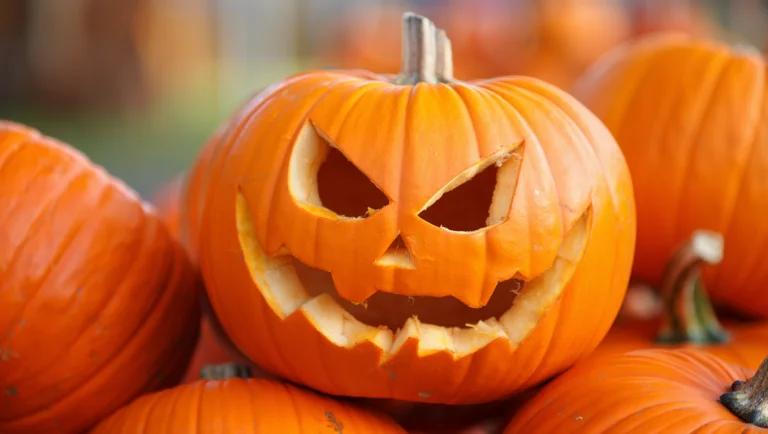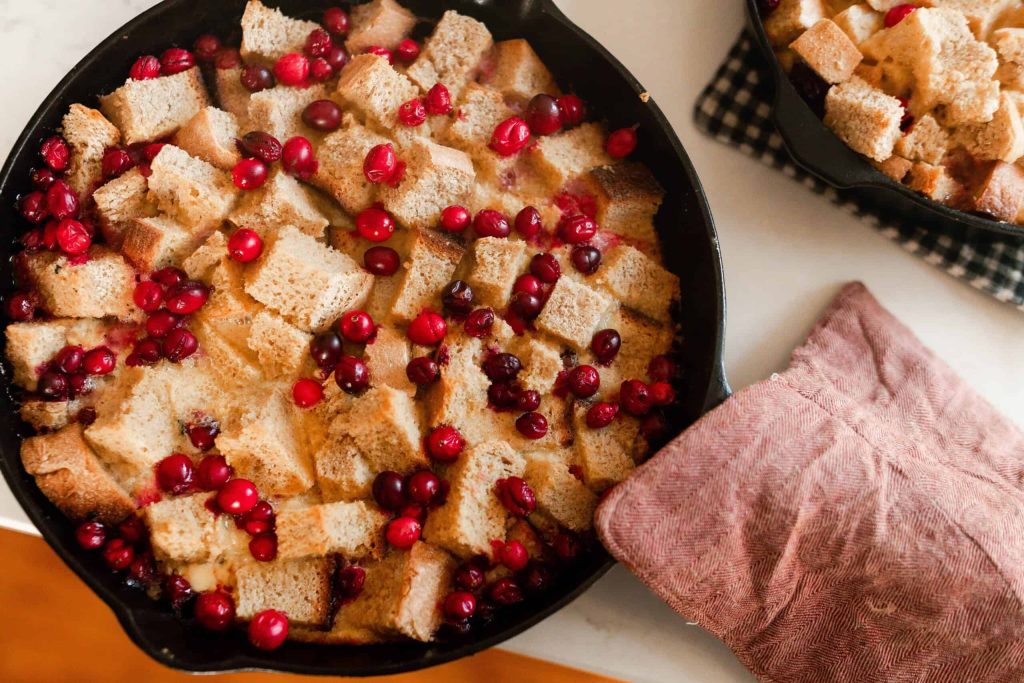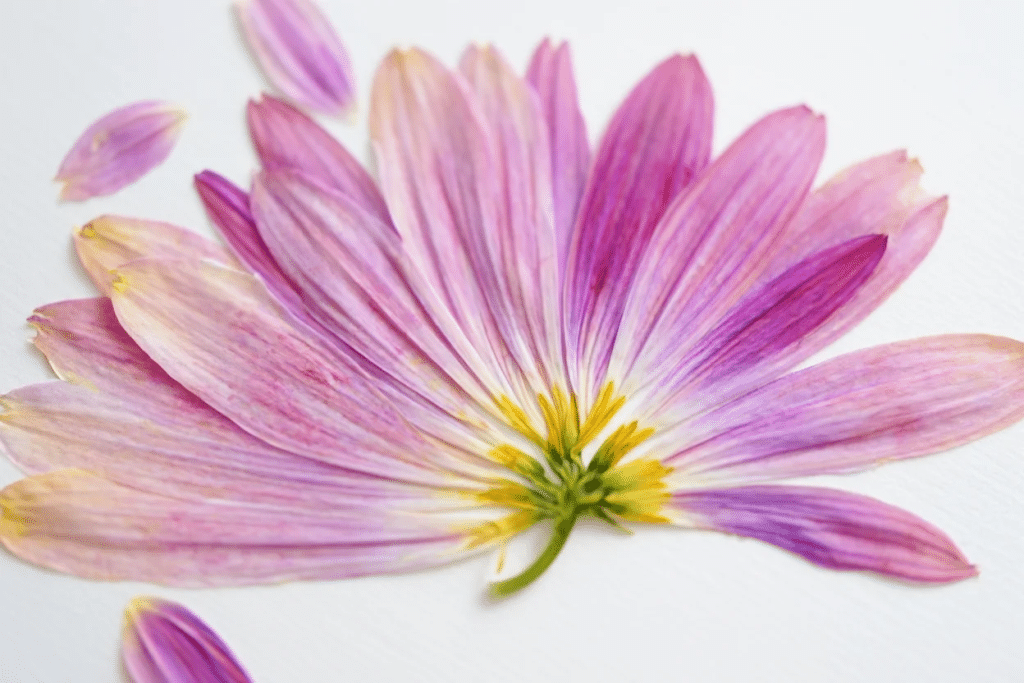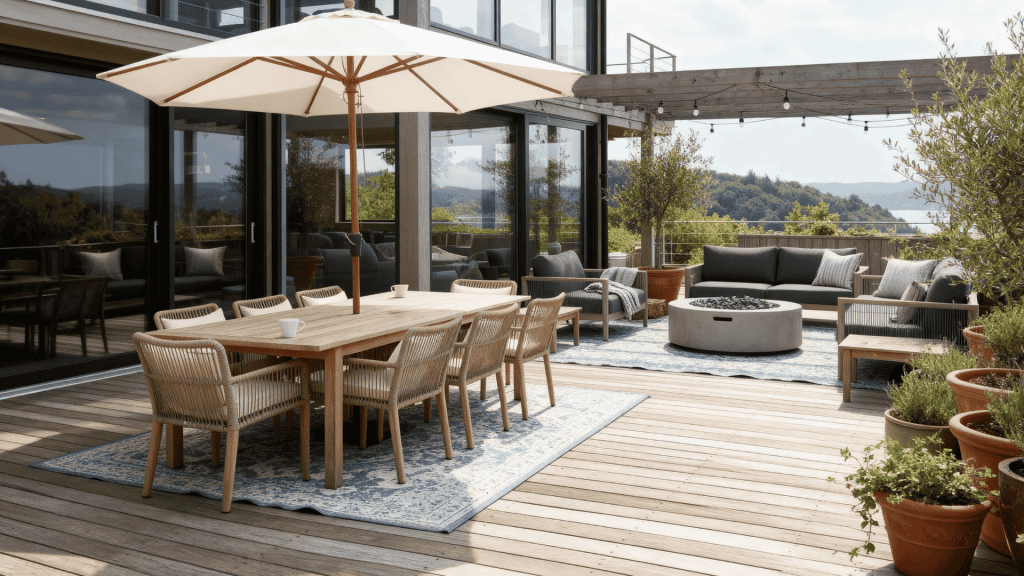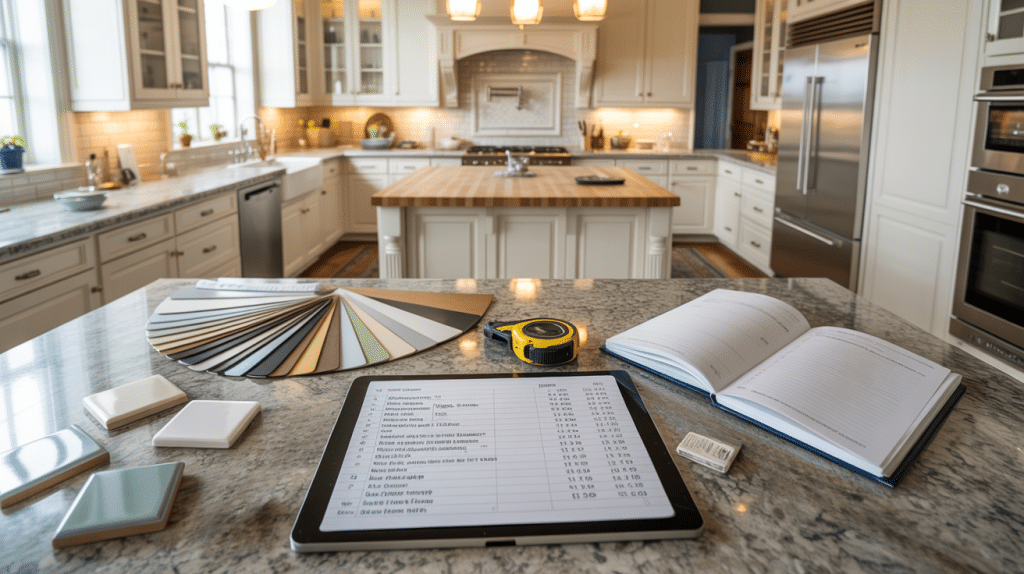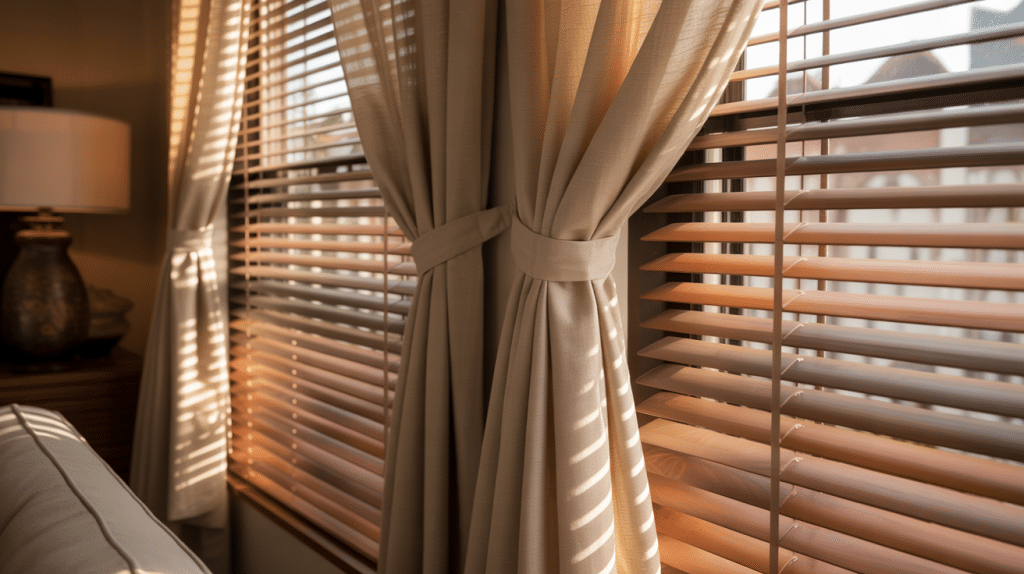Is your hair color making you look older than you are? I see it happen all the time. You walk into a salon with a photo of a gorgeous celebrity, convinced their hair color will look just as stunning on you.
But when you leave, something feels wrong. Your complexion looks dull, your features seem washed out, and you’re stuck with expensive color that doesn’t work. The thing your stylist won’t tell you is that your skin’s undertones control everything.
Finding your real undertones will make all your hair decisions flawless. Your skin will look healthier, your eyes will appear brighter, and you will feel like a million dollars.
Hair Color Analysis 101
Hair color analysis isn’t just about picking what looks pretty. It’s about understanding how colors interact with your natural features. Your skin tone, eye color, and natural hair color all work together to create your color palette.
Think of it like matching puzzle pieces. When you choose a hair color that complements your undertones, everything falls into place perfectly.
The key is knowing your undertones first. Most people think they know theirs, but I’ve seen so many get it wrong.
- Cool undertones feature hints of pink, red, or blue beneath the surface.
- Warm undertones show yellow, golden, or peachy hues.
- Neutral undertones blend both cool and warm elements.
Once you identify your undertones, choosing flattering hair colors becomes much easier. You’ll stop wasting money on shades that don’t work and start building a look that truly complements your natural beauty.
How to Analyse Hair Color According to Skintone?
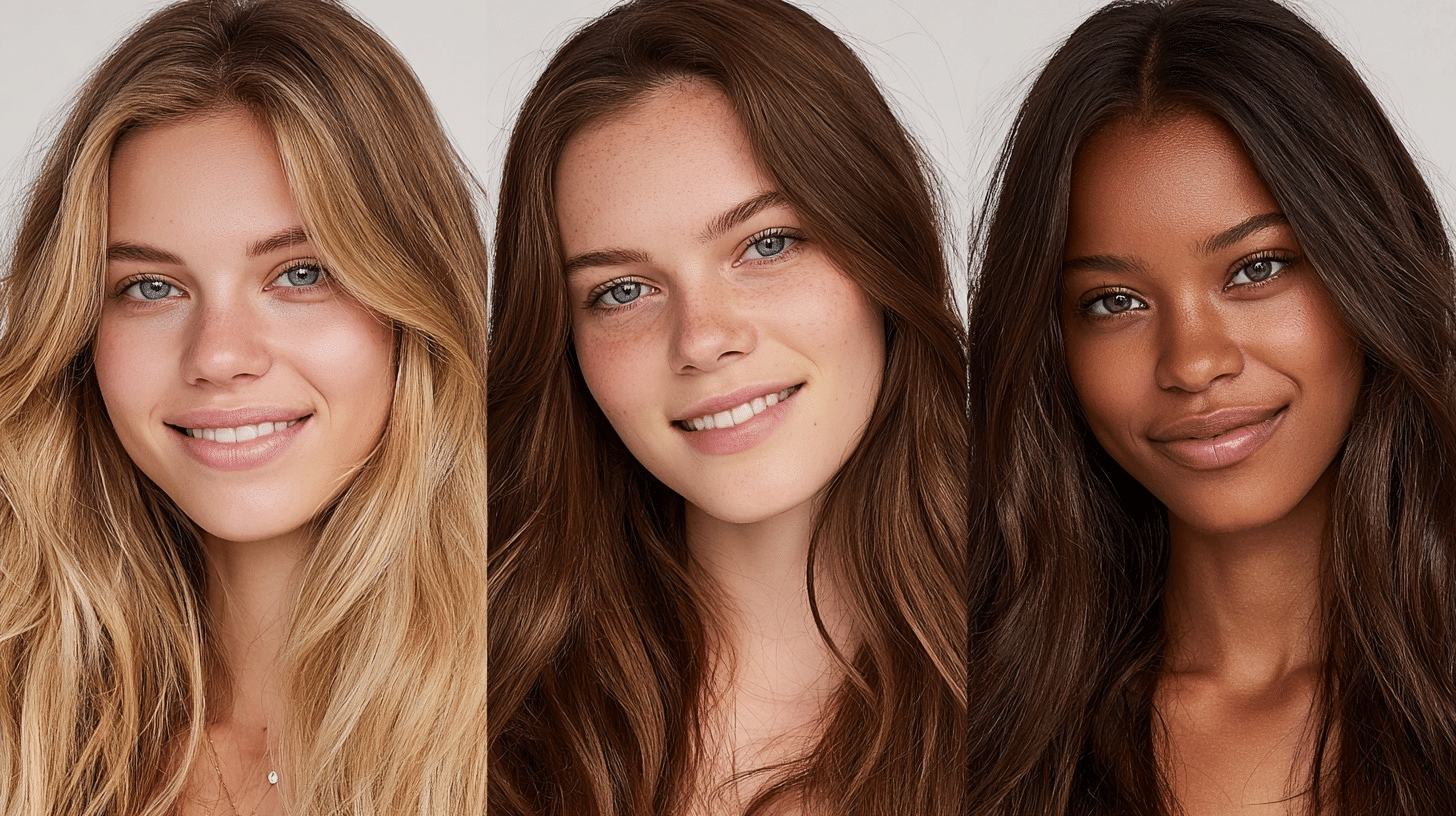
Step 1: Find Your Undertones
- Hold a white paper next to your face in natural light
- Look at your wrist veins – green means warm, blue/purple means cool
- Check which jewelry flatters you – gold suits warm tones, silver suits cool tones
- Notice how you tan – golden tans suggest warm undertones, pink burns suggest cool undertones
Step 2: Match Hair Colors to Your Undertones
For warm undertones, these colors work wonders:
- Golden blonde, honey, and caramel tones
- Rich browns with chocolate or auburn hints
- Copper, strawberry, and warm red shades
- Warm black with brown undertones
For cool undertones, these colors look beautiful:
- Ash blonde, platinum, and icy tones
- Cool browns with no red or orange hints
- Blue-black and jet black shades
- Burgundy and cool red tones
Step 3: Consider Your Natural Contrast
It’s crucial to know the following points beforehand:
- High contrast refers to a significant difference between your skin and hair color.
- Low contrast means they’re similar in intensity.
- If you have high natural contrast, you can handle bolder hair colors.
- Low contrast looks better with subtle changes.
Hair Color Analysis: Influence of The Seasons Theory

The seasons theory categorizes people into four groups based on their skin tone. I find this system helpful for a hair color analysis, but it’s not the only way to choose hair colors. Still, understanding it gives you a good starting point for finding flattering shades.
Spring types have warm undertones with light to medium coloring. They look best in golden blonde, warm light browns, and copper shades.
Think bright, clear colors that match their fresh appearance.
Summer types are characterized by cool-toned, light to medium coloring. They shine in ash blonde, cool light browns, and soft auburn shades. Muted, gentle colors work better than bold, intense ones.
Autumn types have warm undertones with deeper coloring. Rich browns, deep auburn, and golden dark blonde suit them perfectly.
They can handle intense, warm colors that would overwhelm other types.
Winter types are characterized by cool-toned, high-contrast coloring. They look stunning in jet black, cool dark browns, and platinum blonde. Bold, dramatic colors complement their strong natural contrast.
My Color Recommendations
Finding the right shade can be a tricky business. In my experience, I have found that these shades from the following brands work wonderfully well for the specified undertones:
For Warm Undertones
| Brand | Shade Name | Tone |
|---|---|---|
| Madison Reed | Sicilian Gold 8NGV | Golden warmth complements |
| Garnier Nutrisse | Golden Blonde 83 | Brightens warm complexion |
| Clairol | Natural Warm Brown 5W | Natural warmth boost |
For Cool Undertones
| Brand | Cool Shades | Why It Works |
|---|---|---|
| Madison Reed | Roma Blonde | Neutralizes warmth with blue-violet undertones |
| Clairol | Color Strong 8.0 Medium Blonde – Malibu | Budget-friendly, clearly labeled cool tones |
| L’Oréal Paris | 2BL Black Sapphire | Widely available with long-lasting ash finishes |
For Neutral Undertones
| Brand | Shade Name | Why It Works |
|---|---|---|
| Madison Reed | Dark Caramel Blond | Balanced blonde with no brass or ash |
| Clairol Nice’n Easy | 8A Natural Medium Blonde | Soft golden beige is perfect for neutral tones |
| L’Oréal Excellence | 6.1 Light Ash Brown | Neutral brown that avoids red or gold |
Celebrity Before and After Inspos
Ready to see some incredible transformations? These before-and-after reveals will show you exactly what’s possible
1. Jennifer Lawrence
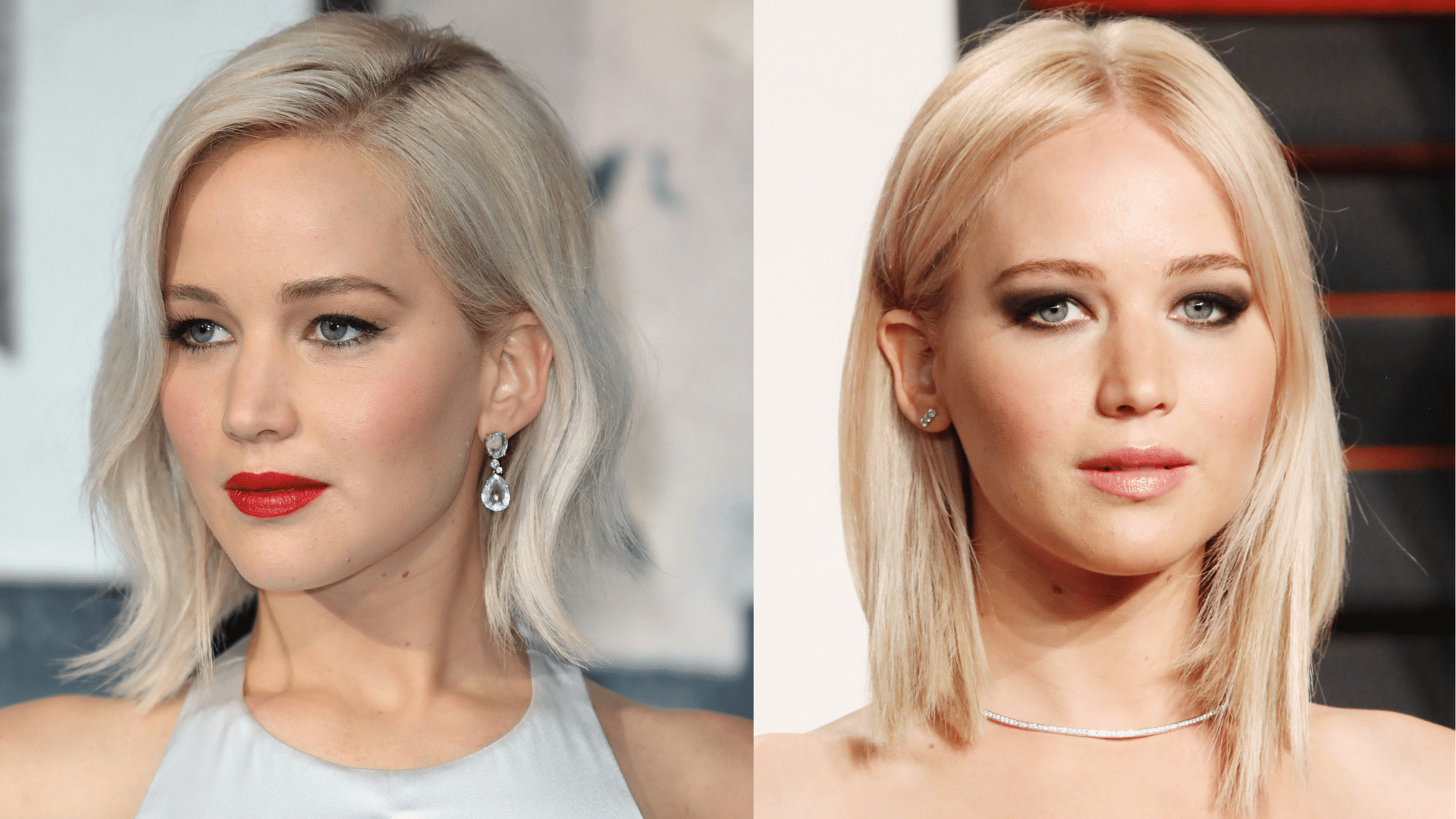
Hair Color Analysis: Jennifer has neutral undertones, and her natural blonde hue works best with warmer tones, which enhance her features. Platinum blonde washes her out, while golden blonde adds warmth and radiance.
- Before: Platinum Blonde
- After: Warm Golden Blonde
2. Emma Stone
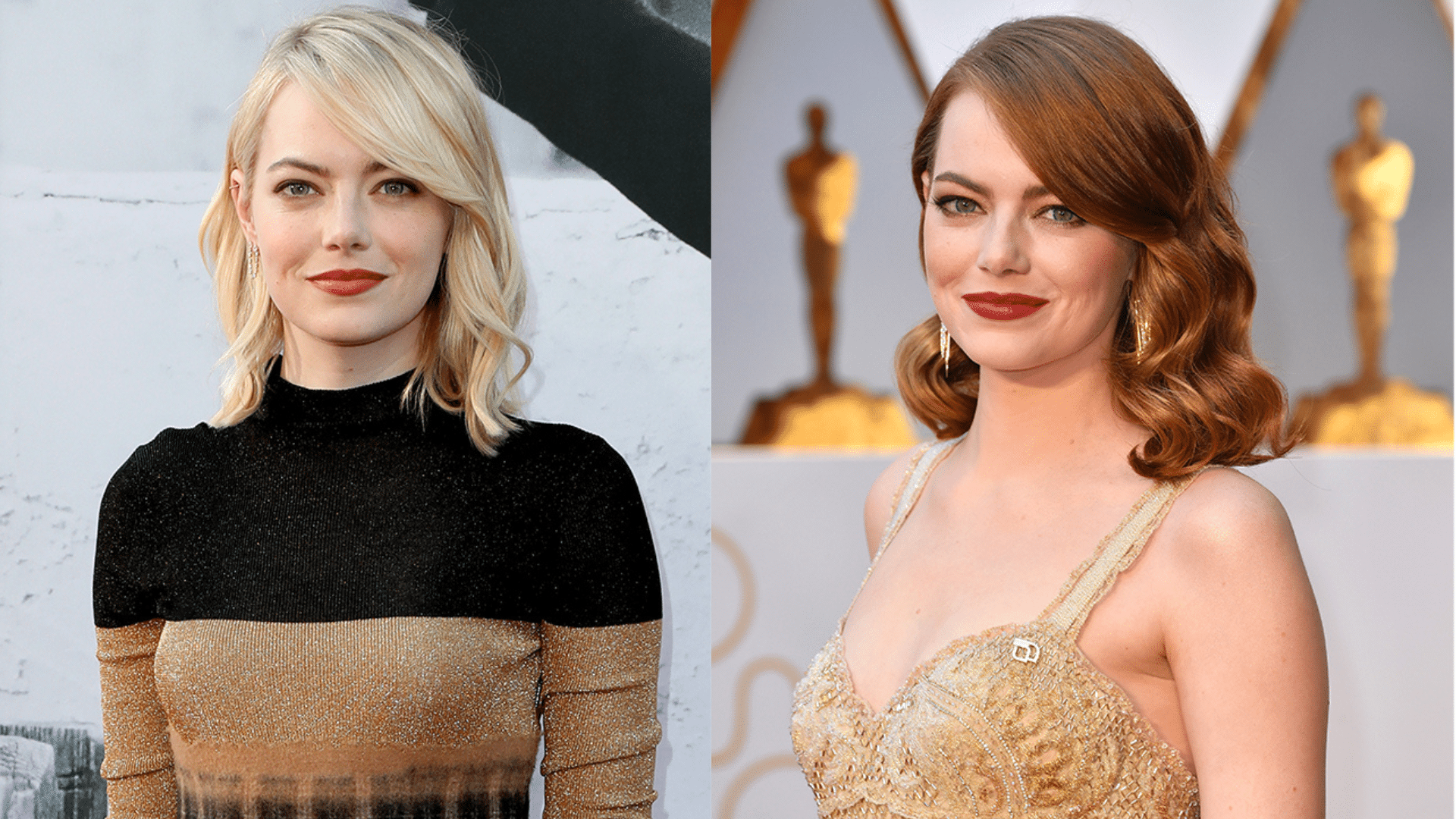
Hair Color Analysis: Emma’s fair skin has neutral to warm undertones, and her shift to auburn red tones complements her complexion. The red tones brighten her skin and eyes, giving her a more vibrant look.
- Before: Blonde
- After: Rich Auburn Red
3. Zendaya
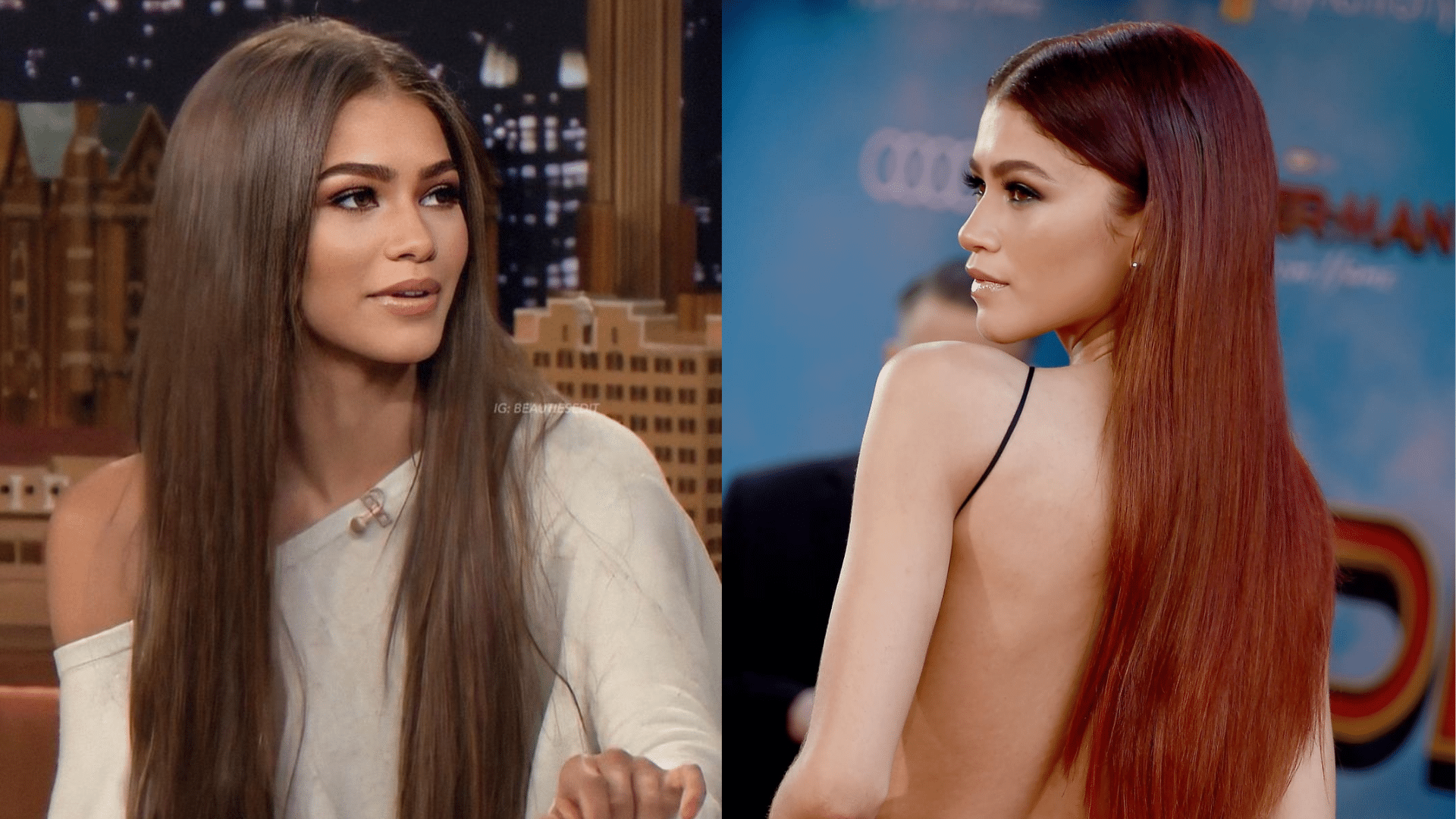
Hair Color Analysis: Zendaya has neutral to warm undertones, and her auburn hair brings out the richness of her skin tone, adding dimension to her dark eyes. The warm shades create a more glowing, natural look.
- Before: Dark Brown
- After: Warm Auburn
4. Blake Lively
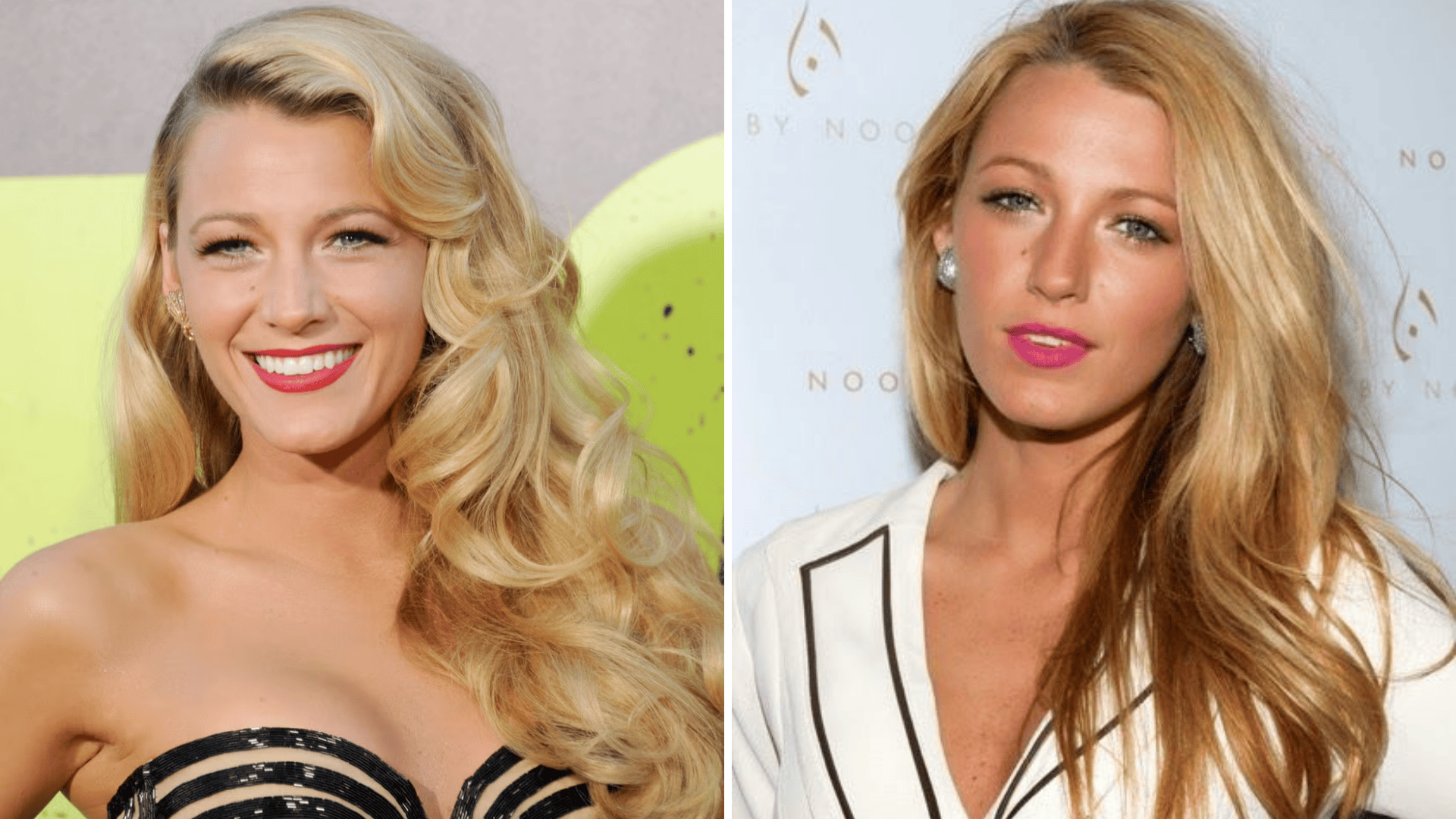
Hair Color Analysis: Blake’s fair skin and light eyes pair beautifully with warm, golden blonde shades. Platinum blonde can make her complexion appear too stark, while honey blonde softens her features and complements her natural glow.
Before: Platinum Blonde
After: Honey Blonde
5. Kylie Jenner
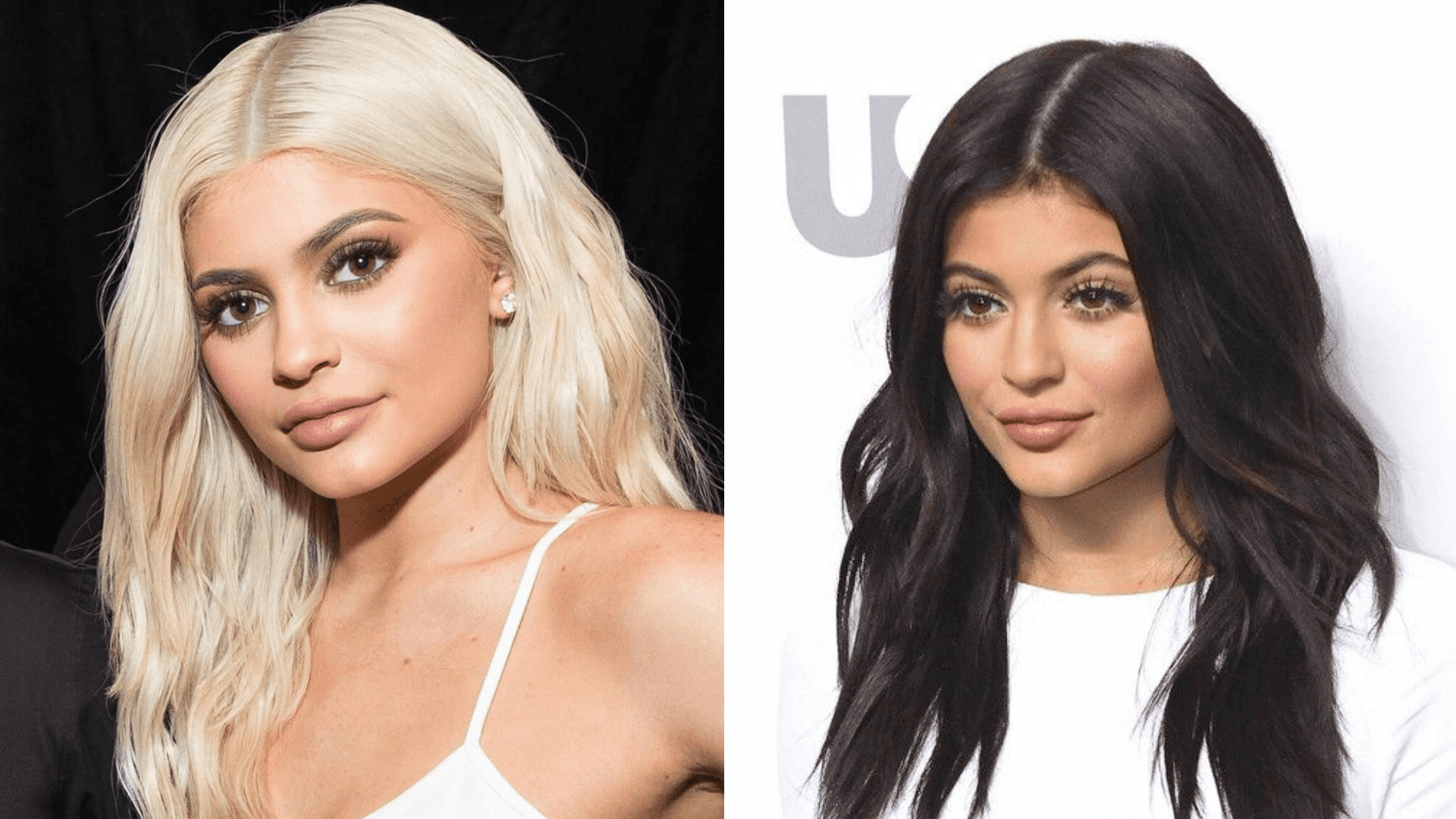
Hair Color Analysis: Kylie’s olive undertones and dark eyes pair perfectly with darker shades. Platinum blonde, though striking, contrasts too harshly with her complexion, while warm brunette shades highlight her features naturally.
Before: Platinum Blonde
After: Dark Brunette
6. Rihanna
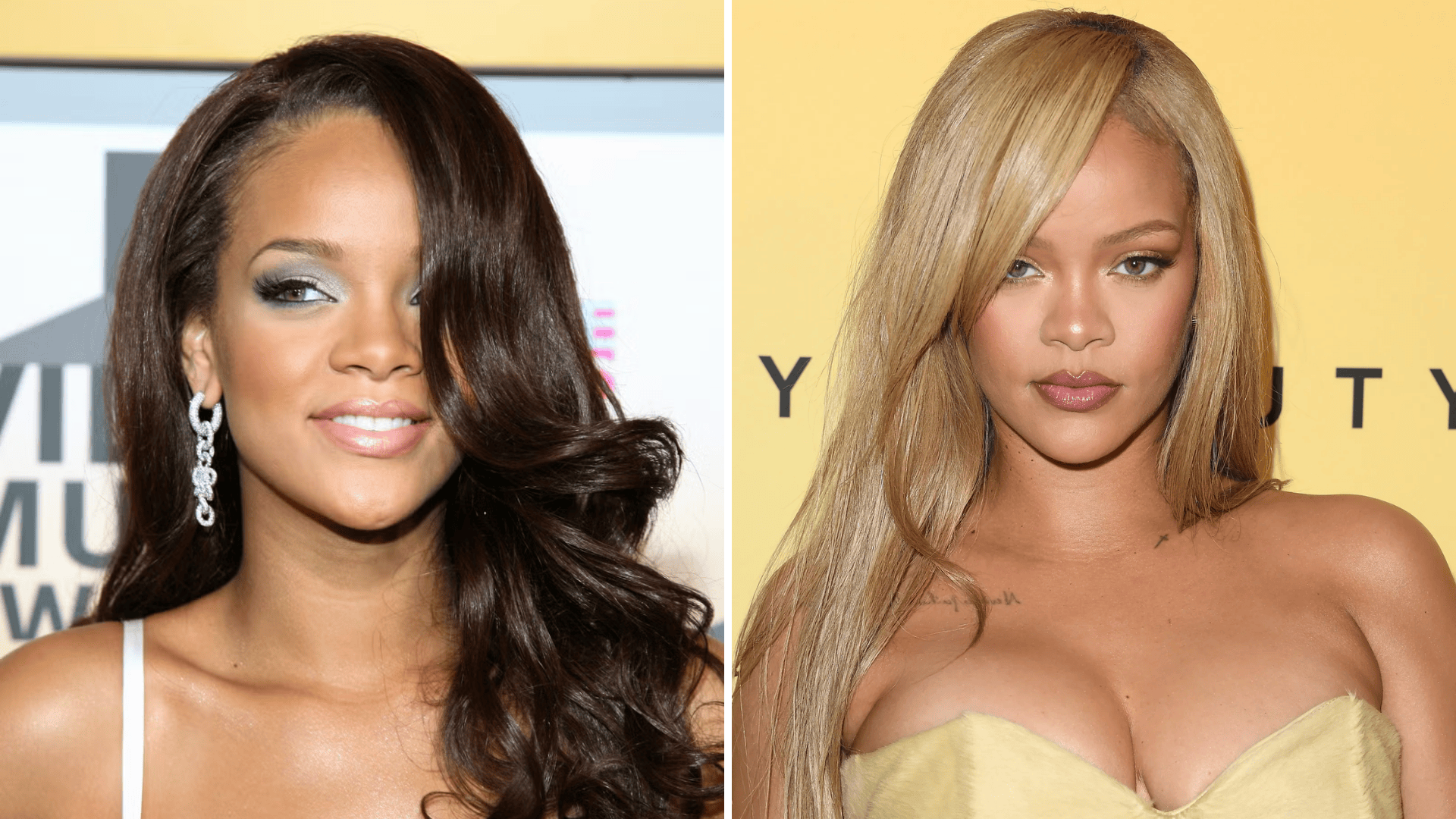
Hair Color Analysis: Rihanna’s deep skin tone allows her to pull off dramatic hair color changes. Dark hues like jet black suit her best, while bright blonde shades create a striking contrast, making her features pop.
Before: Dark Brown
After: Bright Blonde
7. Selena Gomez
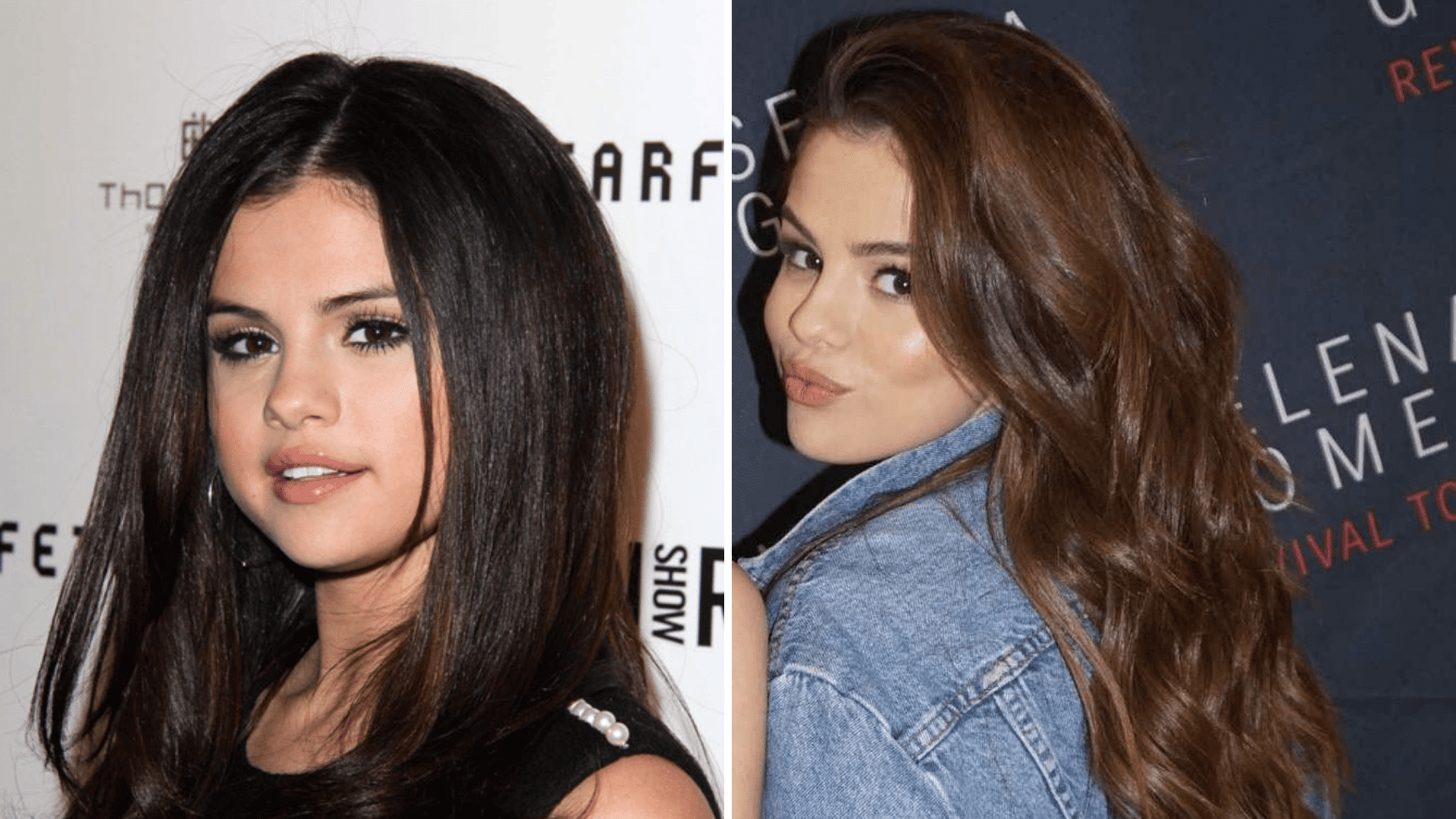
Hair Color Analysis: Selena’s medium skin tone and brown eyes pair wonderfully with rich, warm hues. While dark brown works for her, a subtle chestnut shade adds richness and complements her natural glow.
Before: Dark Brown
After: Chestnut Brown
8. Kim Kardashian
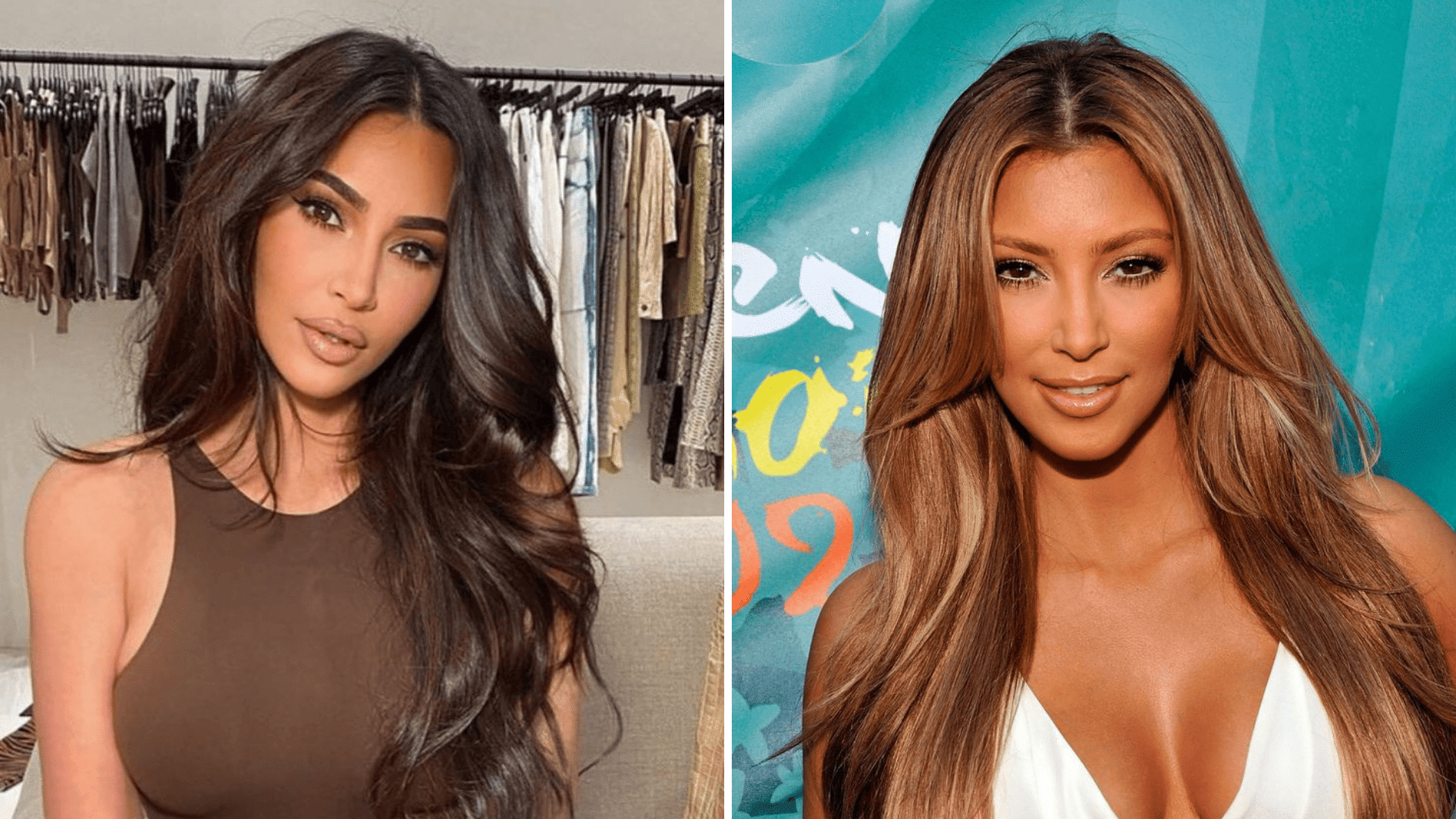
Hair Color Analysis: Kim’s warm, olive skin tone works well with deep, dark tones. Blonde shades can look harsh against her complexion, but caramel and honey highlights add warmth without overwhelming her features.
Before: Dark Brown
After: Caramel Highlights
9. Lady Gaga
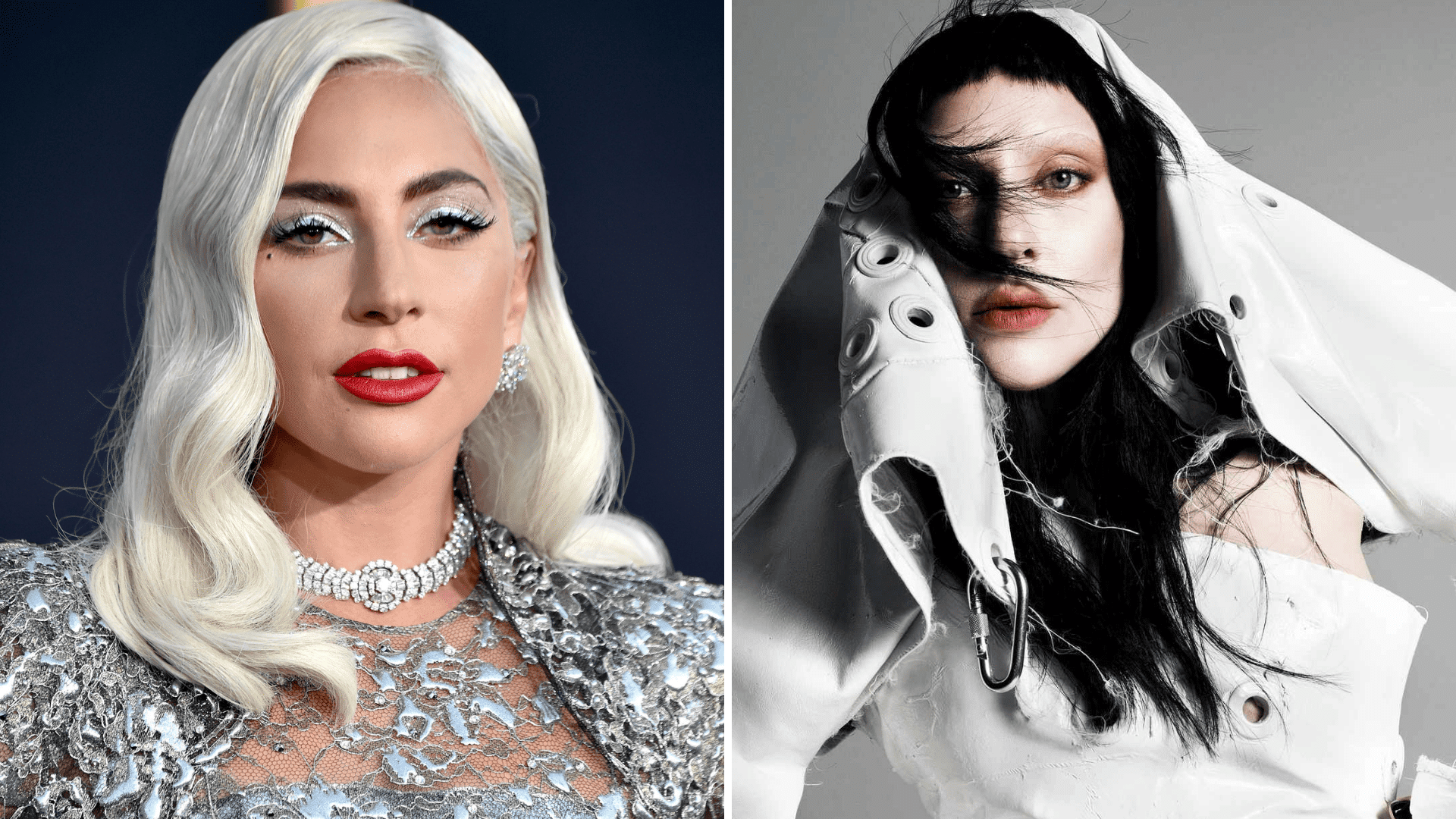
Hair Color Analysis: Lady Gaga’s pale complexion and dramatic style make her a perfect candidate for bold transformations. While platinum blonde offers a glamorous edge, jet black hair highlights her fair skin and bold persona.
Before: Platinum Blonde
After: Jet Black
10. Ariana Grande

Hair Color Analysis: Ariana’s darker skin tone and brown eyes are best complemented by rich, dark hues. Light brown or ombré highlights add dimension to her look, enhancing her features without making them appear too harsh.
Before: Dark Brown
After: Light Brown Ombre
11. Cameron Diaz

Hair Color Analysis: Cameron’s golden complexion is complemented by blonde hues, especially warm shades. Platinum blonde can be too cool, while a honey blonde hue softens her features and gives her a sun-kissed look.
Before: Platinum Blonde
After: Honey Blonde
Common Mistakes to Avoid at All Costs
What looks great on your friend might not look great on you. I learned this lesson the hard way when I tried to recreate a celebrity’s hair color. We had completely different undertones, and the result was a disaster.
You, too, should avoid the following mistakes:
Don’t Ignore Your Natural Features
- Fighting your natural undertones always backfires
- Going too light or too dark from your natural shade can look unnatural
- Consider your eye color – it should complement, not clash with your hair
- Think About Your Lifestyle and Maintenance Needs
Don’t Rush the Decision
- Test colors with temporary options first
- Bring reference photos to your stylist
- Discuss maintenance requirements before committing
- Consider how The Color Will Fade Over Time
Don’t Skip Professional Help for Major Changes
- Going from dark to light or making dramatic color shifts requires expertise.
- Don’t take matters into your own hands. I’ve seen too many home coloring disasters that cost hundreds to fix.
- Some changes are worth the investment in a salon. A professional might be able to conduct a proper hair color analysis.
Make Your New Color Last with These Maintenance Tips
Getting the perfect hair color is just the beginning.
I used to think my job was done once I left the salon, but then I watched my expensive color fade within weeks. The truth is, maintaining your hair color takes effort, but it’s worth it when your shade stays vibrant for months.
- Use a color-safe, sulfate-free shampoo and conditioner to prevent your color from fading too quickly.
- Wash your hair only 2–3 times a week to help your color last longer and improve your hair’s health.
- Use dry shampoo between washes to keep your roots fresh without rinsing out your color.
- Always apply a heat protectant spray before using blow dryers, curling irons, or straighteners.
- Keep heat tools on low to medium settings to prevent unnecessary fading and damage.
- Protect Your Hair from Sun Exposure by Wearing Hats and Using UV-Protecting Hair Products.
And There You Have It
Finding your perfect hair color isn’t about following trends or copying celebrities; it’s about knowing what suits you best. It’s about understanding your unique coloring and choosing shades that make you look like the best version of yourself.
Start by figuring out your undertones using the simple tests I shared. Then experiment with temporary colors or consult a colorist who understands color theory.
Once you find colors that truly flatter you, you’ll wonder why you ever settled for anything less.


